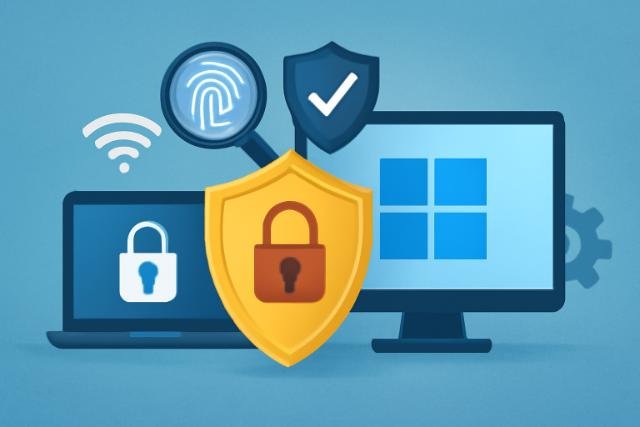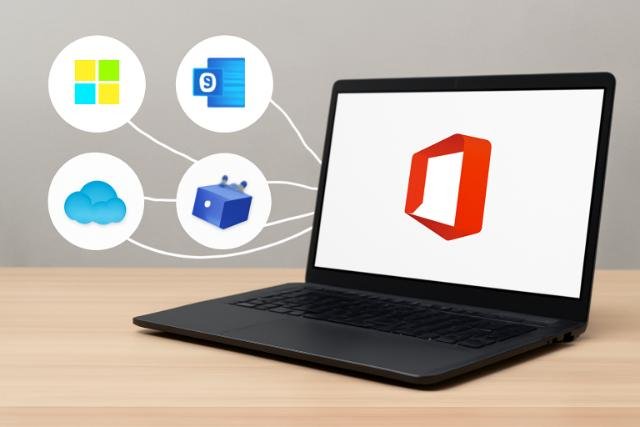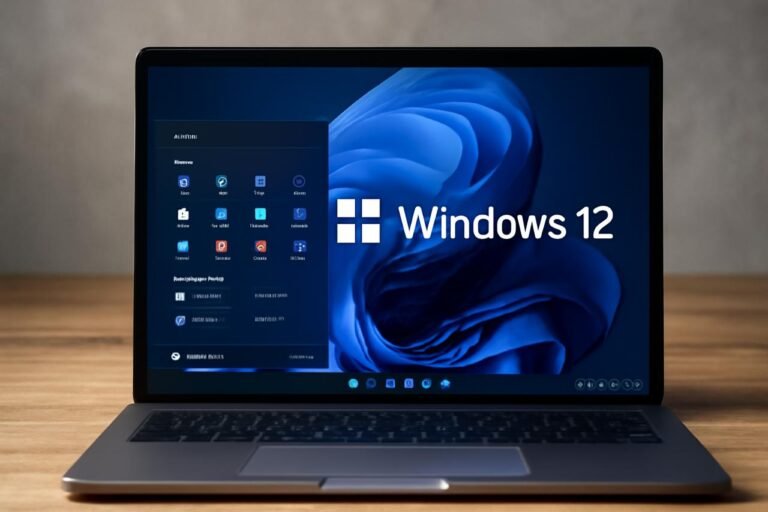Windows 12 is the latest operating system introduced by Microsoft, building on the success and innovation of its predecessor, Windows 11. With a new set of features, design updates, and performance improvements, Windows 12 is designed to enhance user experience and keep up with the ever-evolving tech landscape. Let’s dive into everything you need to know about this new version of Windows.
What’s New in Windows 12?
Windows 12 introduces several exciting features that make it stand out from earlier versions. The user interface has been revamped with modern aesthetics that give it a more streamlined and visually appealing look. From rounded corners to smoother transitions, the design is cleaner and more intuitive, helping users navigate the OS effortlessly.
Moreover, Microsoft has focused on making multitasking easier. The new Snap layouts and improved virtual desktops allow users to organize their workflow with greater flexibility. Whether you’re working on multiple documents, browsing the web, or using other apps, Windows 12 makes switching between tasks smoother than ever.
Finally, Windows 12 offers enhanced personalization options. Customization is more accessible, allowing users to tailor their system’s appearance, settings, and overall behavior to suit their preferences. Whether you like dark mode or light mode, or prefer a specific color scheme, Windows 12 gives you the control to make it your own.
New User Interface
Windows 12’s user interface is designed to feel modern and fluid. The overall design focuses on minimalism, with a clean, easy-to-navigate layout. The Start Menu has been improved with better organization and quicker access to important apps and features, making your interactions smoother and more enjoyable.
Improved Multi-Tasking Features
Windows 12 introduces Snap Assist with more sophisticated features. Now you can easily organize windows side by side in a variety of configurations, improving efficiency. Furthermore, virtual desktops allow users to create dedicated spaces for different projects, giving them more control over their workspace.
Performance Enhancements in Windows 12
One of the biggest improvements in Windows 12 is performance. The operating system is designed to run faster and more efficiently. Users can expect quicker boot times, reduced lag, and overall better responsiveness. These improvements contribute to a smoother experience whether you’re gaming, working, or simply browsing the web.
Another significant performance boost is the resource management system. Windows 12 is optimized to handle background processes better, ensuring your system runs smoothly even when multiple apps are open. The new power-saving features also extend battery life on laptops and tablets.
Finally, for gamers, Windows 12 introduces improved support for DirectStorage and Auto HDR, which enhance gaming performance. These features minimize load times and increase the overall gaming experience, especially on high-performance hardware.
Faster Boot Times
With Windows 12, startup times are much faster. The OS prioritizes quick system initialization, so users can begin their tasks sooner. This change is particularly noticeable in machines that use solid-state drives (SSDs), as the boot process has been streamlined to minimize delays.
Better Resource Management
Windows 12’s advanced resource management optimizes how the system allocates power, memory, and CPU resources. This means that even when running multiple applications at once, your system will feel snappier and more responsive, especially on devices with limited hardware resources.
Security Features of Windows 12

Security has always been a top concern for Microsoft, and Windows 12 takes it to the next level with advanced protection features. The new OS offers better malware and ransomware protection, actively blocking threats and responding to suspicious activities in real time.
Additionally, Windows 12 improves upon user privacy settings, giving users more control over their data. The operating system now features enhanced privacy settings, allowing users to manage what information is shared with third-party apps and services.
Windows 12 also introduces biometric authentication options, including enhanced facial recognition and fingerprint scanning. These security features make logging into your device easier and more secure, offering an additional layer of protection for your personal data.
Enhanced Malware Protection
Windows 12 comes with stronger built-in defenses against various types of malware, including spyware, ransomware, and viruses. The system automatically scans for potential threats and blocks suspicious files before they can cause damage.
Improved Privacy Settings
Privacy concerns have been addressed in Windows 12 with a more transparent approach to data collection. Users now have more control over which apps and services can access their data, giving them peace of mind knowing that their personal information is better protected.
Compatibility with Older Hardware
Windows 12 is designed to run smoothly on a wide range of devices. While the new features are optimized for the latest hardware, the operating system is still compatible with older devices, so users don’t have to worry about upgrading their hardware right away.
It also comes with better support for legacy software and peripherals, meaning that older applications and devices should continue to function without issue. This compatibility ensures a smoother transition for users upgrading from earlier versions of Windows.
However, some older devices may not fully support all of Windows 12’s advanced features. It’s important to check system requirements before upgrading to make sure your device can handle the new OS.
Support for Legacy Devices
Windows 12 provides ongoing support for a wide variety of older hardware, ensuring that devices such as printers, external drives, and other peripherals continue to work seamlessly with the new operating system.
Streamlined Driver Updates
Driver updates have been simplified in Windows 12. The OS automatically checks for and installs the necessary drivers, eliminating the need for manual installations and ensuring that your hardware components are always up to date.
Customization Options in Windows 12
Windows 12 offers a new level of customization, allowing users to personalize almost every aspect of the operating system. The new system makes it easier to change the look and feel of your desktop, taskbar, and window layout with just a few clicks.
A standout feature in the new customization options is the ability to change the system’s color scheme and accent colors. This means users can tailor their environment to their preferences, whether they prefer vibrant hues or a more subdued design.
Moreover, Windows 12 gives users more flexibility with taskbar and Start Menu customization. You can now add, remove, and organize shortcuts more easily, creating a workspace that truly suits your workflow.
Dynamic Wallpapers and Themes
Dynamic wallpapers allow users to set different images or themes based on the time of day or their current activity. This adds a personal touch to your desktop environment, helping create an experience that feels unique.
Advanced Taskbar Customization
Windows 12 offers users more flexibility with the taskbar. You can pin apps, resize icons, and customize how the taskbar behaves to suit your needs. Whether you like it centered or aligned to the left, the choice is yours.
Integration with Microsoft Services

Windows 12 is tightly integrated with Microsoft’s services, such as OneDrive, Microsoft Edge, and Office 365. This integration allows users to seamlessly connect with their cloud storage, access documents, and collaborate with others across different platforms.
OneDrive integration has been improved, making it easier to store files in the cloud and access them from any device. Windows 12 also allows better synchronization of settings and preferences, so your experience remains consistent no matter where you log in.
Additionally, Microsoft Edge comes with new features designed to enhance the browsing experience, such as better security, faster page loads, and improved compatibility with web standards.
Seamless Cloud Storage Integration
Windows 12’s integration with OneDrive is more seamless than ever, ensuring that your files are easily accessible and synced across devices. This makes working from different locations or on multiple devices a breeze, with all your files safely stored in the cloud.
Enhanced Microsoft Edge Features
Microsoft Edge has been enhanced in Windows 12 with faster browsing speeds, greater privacy protections, and better compatibility with modern web technologies. The browser now supports smoother integration with other Microsoft services, providing a more cohesive experience.
How to Upgrade to Windows 12
Upgrading to Windows 12 is relatively easy, but it’s important to ensure that your device meets the necessary system requirements. You can check compatibility through the Windows Update tool, which will notify you if your system is eligible for the upgrade.
Before upgrading, it’s essential to back up all your data. This ensures that, in the unlikely event something goes wrong during the installation process, you won’t lose any important files or documents. A cloud backup or external hard drive is a good choice for this purpose.
Once you’ve confirmed that your system is ready, you can follow the straightforward installation process. Windows 12 will guide you through the upgrade, ensuring that it’s as seamless as possible.
Checking System Requirements
Before upgrading, check if your device meets the minimum requirements for Windows 12. This includes processor, RAM, and storage space. If your device doesn’t meet these, you may need to consider upgrading your hardware.
Backup Your Data
Make sure to back up all your files before upgrading. This step will protect your data in case anything goes wrong during the installation. Use a reliable backup tool or cloud service to store your important files securely.
Conclusion
Windows 12 represents a significant leap forward in Microsoft’s operating system evolution, offering a range of new features, performance improvements, and enhanced security measures that cater to both casual users and professionals. With a focus on speed, customization, and seamless integration with Microsoft services, Windows 12 ensures a smooth and efficient experience across devices. Whether you’re upgrading from an older version or starting fresh, Windows 12 promises to deliver a more intuitive, responsive, and personalized computing environment.
Explore more insightful and valuable content on our blog journalingtechniques! Stay updated with helpful tips, expert advice, and in-depth articles that enhance your knowledge.
FAQ’s
Yes, Windows 12 is designed to work with older PCs, but certain features may not be available on older hardware. It’s important to check your system’s specifications to ensure it meets the necessary requirements.
Yes, you can upgrade from Windows 10 to Windows 12, as long as your device meets the minimum system requirements. Make sure to back up your data and follow the upgrade process for a smooth transition.
Yes, Windows 12 includes support for DirectStorage and Auto HDR, which help improve gaming performance by reducing load times and enhancing graphics. It is an ideal choice for gamers looking to get the most out of their gaming rigs.
Yes, Microsoft plans to provide regular updates for Windows 12, including security patches, bug fixes, and feature enhancements, ensuring that the OS remains secure and functional over time.

